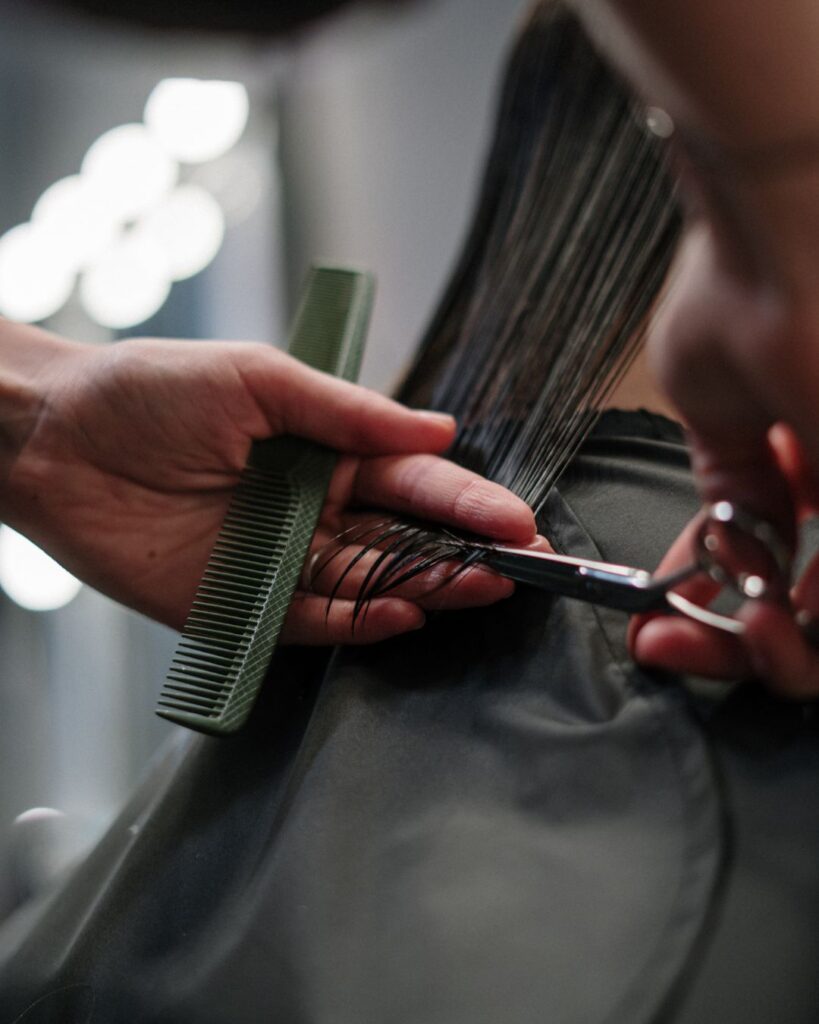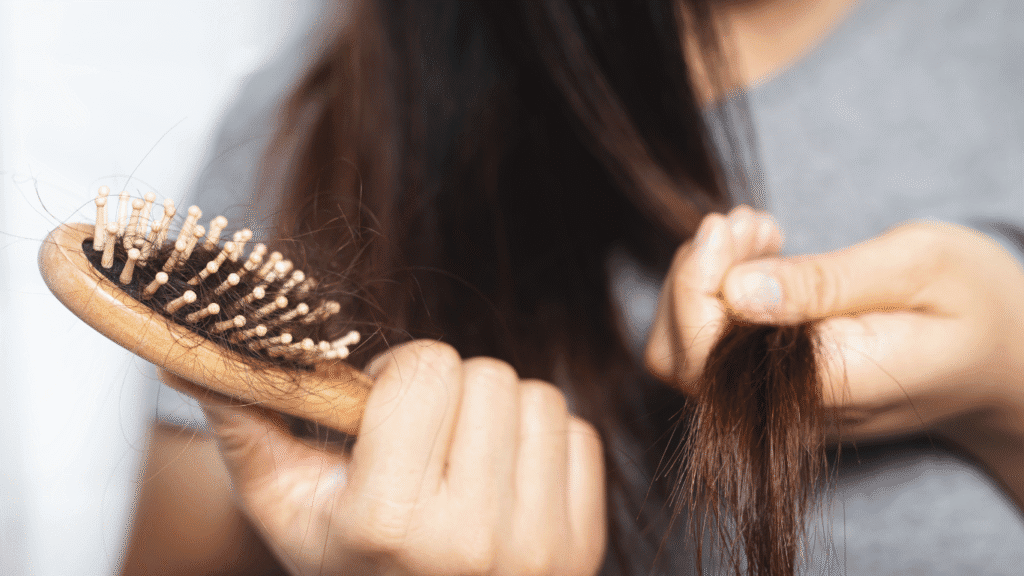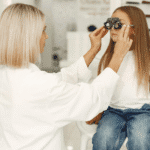Hair is a woman’s crowning glory. Yet, millions of women worldwide struggle with unexpected hair loss that affects their confidence, self-esteem, and daily life. Understanding the most common causes of hair loss in women is the first step toward prevention and treatment.
If you’ve ever wondered why is my hair falling or what causes hair loss in women.
Understanding Hair Loss in Women
Before diving into the causes, let’s clarify what hair loss means. It’s normal to shed 50–100 hairs daily as part of the natural hair growth cycle. But when hair loss exceeds this, or you notice bald spots, thinning, or receding hairlines, it’s time to identify the underlying cause.
The most common causes of hair loss in women vary from hormonal imbalances and medical conditions to lifestyle habits and genetic factors. Let’s explore each in detail.
1. Hormonal Imbalances
Hormonal imbalances are one of the leading causes of hair loss in women. Hormones regulate the hair growth cycle, and any fluctuation can disrupt it.
Key hormonal triggers for hair loss in women include:
Pregnancy and postpartum: Many women experience excessive hair shedding after childbirth due to sudden hormonal shifts.
Menopause: Declining estrogen and progesterone levels can cause hair to become thin and brittle.
Polycystic Ovary Syndrome (PCOS): PCOS can trigger androgen (male hormone) production, leading to thinning hair on the scalp and excess facial hair.
Thyroid disorders: Both hypothyroidism and hyperthyroidism can cause noticeable hair thinning.
Tip: If you suspect a hormonal imbalance, consult a doctor for a proper diagnosis and treatment plan.

2. Genetics and Female Pattern Baldness
Another common cause of hair loss in women is genetics. Female pattern hair loss, also known as androgenetic alopecia, is hereditary and affects millions worldwide.
How it shows up:
- Gradual thinning on the crown or top of the head
- Widening part line
- Rarely leads to complete baldness like in men, but can be significant
- Genetic hair loss usually starts after menopause but can begin as early as the 20s.
Solution:
Early intervention with treatments like minoxidil can help slow progression.
Seek advice from a dermatologist if you notice gradual thinning.
3. Stress-Induced Hair Loss
Emotional and physical stress is a surprisingly common cause of hair loss in women. This type of hair loss, known as telogen effluvium, pushes a large number of hair follicles into a resting phase.
Causes of stress-related hair loss:
- Major surgery
- Severe illness or infection
- Trauma or emotional stress (e.g., loss of a loved one, divorce)
- Crash diets or sudden weight loss
The good news? Stress-related hair loss is often temporary. Once the stressor is removed, hair typically regrows within 6–9 months.
- Tips for stress management:
- Practice relaxation techniques such as yoga or meditation.
- Get adequate sleep.
- Maintain a balanced diet to support healthy hair growth.
4. Nutritional Deficiencies
What you eat plays a huge role in healthy hair. Poor nutrition is a major but often overlooked cause of hair loss in women.
Key nutrient deficiencies linked to hair loss include:
Iron deficiency (anemia): One of the top causes of hair shedding in women.
Protein deficiency: Hair is made of keratin, a protein. Without enough protein, hair growth suffers.
Zinc deficiency: Zinc helps with tissue growth and repair, including hair.
Vitamin D deficiency: Low levels can disrupt hair follicle cycling.
Biotin deficiency: While rare, severe lack of biotin can lead to hair thinning.
Solution:
- Eat a balanced diet rich in lean proteins, leafy greens, nuts, seeds, and fatty fish.
- Consider supplements if recommended by a healthcare professional.
- Get blood work done to rule out deficiencies.
5. Hairstyles and Hair Treatments
Did you know your favorite hairstyle could be causing hair loss? Traction alopecia is hair loss caused by constant pulling or tension on the hair.
Hairstyles and practices that cause traction alopecia:
- Tight ponytails or buns
- Braids, cornrows, or dreadlocks worn too tight
- Hair extensions that pull on natural hair
- Excessive use of heat styling tools
- Chemical treatments like bleaching, perming, or relaxing

How to protect your hair:
- Opt for loose hairstyles.
- Avoid excessive heat and harsh chemicals.
- Use gentle hair ties that don’t snag.
- Let your hair rest from tight styles.
6. Medical Conditions and Medications
Certain medical conditions and medications can also cause hair loss in women.
Medical conditions linked to hair loss:
Autoimmune diseases: Conditions like alopecia areata cause the immune system to attack hair follicles.
Scalp infections: Fungal infections like ringworm can lead to patchy hair loss.
Chronic illnesses: Diabetes and lupus are also known to cause hair thinning.
Medications that can cause hair loss include:
- Chemotherapy drugs
- Some antidepressants
- Blood thinners
- Birth control pills
- Medications for high blood pressure
What to do:
If you suspect your medication is causing hair loss, don’t stop taking it abruptly. Talk to your doctor about possible alternatives.
7. Aging and Natural Hair Cycle Changes
Aging naturally affects hair growth. As women age, hair tends to grow slower and becomes finer. The hair follicles shrink, producing thinner strands, and the growth phase shortens.
Most women notice gradual thinning in their 40s and beyond, often due to a combination of genetics and hormonal changes.
How to manage age-related hair loss:
- Use gentle, volumizing hair products.
- Try a shorter haircut for fuller-looking hair.
- Focus on scalp care and nourishment.
8. Sudden Weight Loss or Crash Dieting
Extreme diets are another common cause of hair loss in women. Sudden weight loss shocks the body, which redirects nutrients to vital organs, neglecting hair growth.
Restrictive diets that cut out entire food groups can lead to protein, vitamin, and mineral deficiencies—fuel for your hair follicles.
Solution:
- Aim for gradual, healthy weight loss.
- Eat a balanced, nutrient-rich diet.
- Avoid fad diets that promise drastic results fast.

9. Hair Loss After Illness or COVID-19
Post-illness hair loss has become more common, especially after COVID-19. Many women experience hair shedding a few months after recovering from a severe illness.
This is another form of telogen effluvium, where hair follicles enter the resting phase due to physical stress on the body.
10. Poor Hair Care Practices
Lastly, poor hair care habits can weaken hair and contribute to breakage and shedding.
Avoid these common mistakes:
- Over-washing your hair with harsh shampoos
- Brushing wet hair aggressively
- Using old or dirty hair tools
- Not protecting hair from sun damage
- Skipping regular trims to remove split ends
Better hair care practices:
- Use sulfate-free shampoos and conditioners.
- Detangle gently with a wide-tooth comb.
- Protect your hair from UV rays with a hat or scarf.
- Deep condition weekly for added moisture.
How to Prevent Hair Loss in Women
Now that you know the most common causes of hair loss in women, you can take steps to prevent or manage it.
- Maintain a healthy, balanced diet.
- Get regular check-ups to monitor hormones and deficiencies.
- Manage stress through mindfulness and self-care.
- Be gentle with your hair—avoid tight styles and harsh treatments.
- Seek professional help if you notice sudden or excessive hair loss.
Remember, hair loss can be caused by a single factor or a combination. Don’t ignore the signs—early intervention makes all the difference!
FAQs About Hair Loss in Women
Q: Is it normal for women to lose hair daily?
Yes, shedding about 50–100 hairs a day is normal. Excessive shedding may indicate an underlying issue.
Q: Can hair loss in women be reversed?
It depends on the cause. Nutritional, stress-related, or traction alopecia is often reversible. Genetic hair loss can be managed but not fully cured.
Q: Should I see a doctor for hair loss?
Yes, especially if you notice sudden, patchy, or severe hair loss. A doctor can help find the root cause and recommend treatments.
Understanding what causes hair loss in women empowers you to take charge of your hair health. By making smart lifestyle choices and seeking timely treatment, you can restore your confidence and enjoy healthy hair for years to come.

